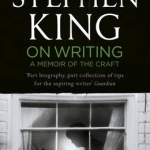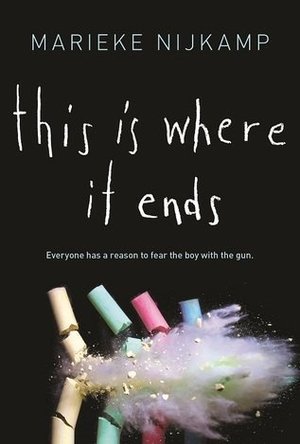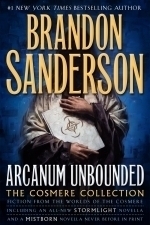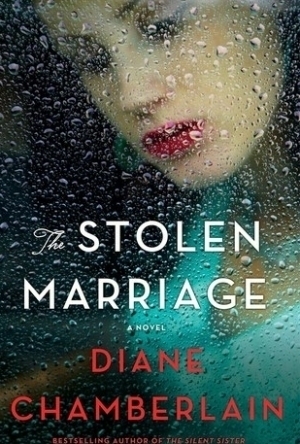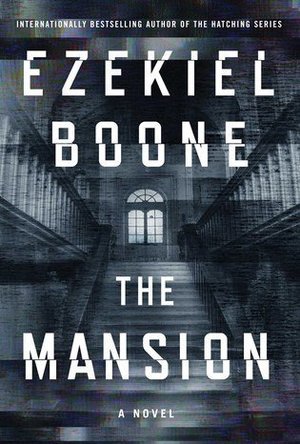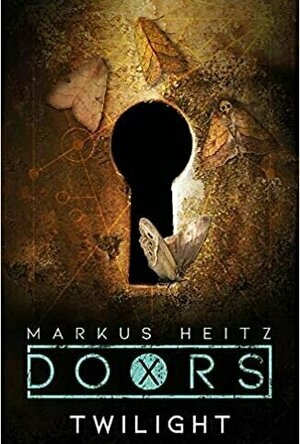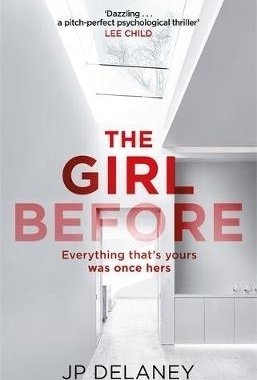Search
Search results
Rachel King (13 KP) rated On Writing in Books
Feb 11, 2019
I have not now nor ever been a fan of Stephen King's fiction, nor do I intend to change that pattern. His personal brand of fiction is simply not for me. But since this book is non-fiction, curiosity got the better of me. I am glad that I read this book very much, for both the memoir of his writing life, as well as the writing skills he attempts to impart.
The first half of the book is largely a memoir of King's life, with a focus on his writing career. The reader learns things such as what inspired him, what he liked in fiction, his initial forays into getting published, as well as his many rejections and criticisms. I found it both interesting and ironic that his first big book, Carrie, was accomplished largely thanks to his wife's encouragement, as he never really cared for the main character. He could take the simplest ideas, put two random thoughts together, and make them into these successful stories. All of this is woven into the more mundane aspects of his life, from schooling, to various jobs, to meeting his future wife.
The second part of the book is all about what King considers good writing practices, as well some of the advice that King has received over the years, such as when writing a second draft, subtract 10% from the original. He even goes into the details of good grammar and repeatedly refers to Strunk and White's The Elements of Style. He finishes off this section by showing a section of a first draft he wrote, and then the edited second draft of it to give the reader an idea of how to approach the editing process.
A final section in the book goes into the details of when King was hit and nearly killed by a "blue van" and the effect that it had on his life and his writing. The accident actually occurs before he begins the second part of this book, giving the manuscript the possibility of never being completed. This was probably the most intriguing part of the book for me, as he was able to remember in vivid detail what happened to him, and yet he seemed to be oddly emotionally-detached from its long-term consequences for his life. There is only one short paragraph in which I actually pick up on some emotion, when he discusses how quickly the driver of the blue van will likely be returning to the road. At one point he also made the observation that the driver could have stepped from the pages of one of his novels. What I do love is that his passion for writing helped him to overcome his injuries and regenerate that need to keep putting words to the page.
The first half of the book is largely a memoir of King's life, with a focus on his writing career. The reader learns things such as what inspired him, what he liked in fiction, his initial forays into getting published, as well as his many rejections and criticisms. I found it both interesting and ironic that his first big book, Carrie, was accomplished largely thanks to his wife's encouragement, as he never really cared for the main character. He could take the simplest ideas, put two random thoughts together, and make them into these successful stories. All of this is woven into the more mundane aspects of his life, from schooling, to various jobs, to meeting his future wife.
The second part of the book is all about what King considers good writing practices, as well some of the advice that King has received over the years, such as when writing a second draft, subtract 10% from the original. He even goes into the details of good grammar and repeatedly refers to Strunk and White's The Elements of Style. He finishes off this section by showing a section of a first draft he wrote, and then the edited second draft of it to give the reader an idea of how to approach the editing process.
A final section in the book goes into the details of when King was hit and nearly killed by a "blue van" and the effect that it had on his life and his writing. The accident actually occurs before he begins the second part of this book, giving the manuscript the possibility of never being completed. This was probably the most intriguing part of the book for me, as he was able to remember in vivid detail what happened to him, and yet he seemed to be oddly emotionally-detached from its long-term consequences for his life. There is only one short paragraph in which I actually pick up on some emotion, when he discusses how quickly the driver of the blue van will likely be returning to the road. At one point he also made the observation that the driver could have stepped from the pages of one of his novels. What I do love is that his passion for writing helped him to overcome his injuries and regenerate that need to keep putting words to the page.
Kristy H (1252 KP) rated Goodbye, Vitamin in Books
Jan 21, 2018
Funny (2 more)
Sweet moments
Well-written
Lovely, touching read
After a rough breakup with her fiance, Ruth reluctantly accepts her mother's request to return home and help care for her father, Howard, who is suffering from Alzheimer's disease. Once home, Ruth realizes that Howard--an extremely well-respected professor of history--has his good days and bad days, while her mother has stopped cooking (blaming the aluminum in cookware for Howard's illness). Floundering at first, Ruth eventually steps up, cooking for her family, helping her father, and generally trying to regain her footing. But even she cannot ignore that her father's condition is worsening.
This is an interesting novel, told in short bits and pieces, as if Ruth is talking to her father and describing their days. It covers one year after she comes to stay and comes across almost as if a diary, with a very conversational tone (interspersed with her random thoughts). It's oddly compelling and often humorous, despite the serious subject matter. Occasionally, we get a few snippets from a journal Ruth's father kept during her childhood, chronicling funny things she did or said as a child.
As for Ruth, there's a lightness to many of her stories and observations, but also a sadness: she's watching her beloved, intelligent father fall prey to Alzheimer's; there is a darkness as well, as she grapples with finding out imperfections about her parents' marriage and life. The character list is limited, but all we need, including Ruth's younger brother, Linus; Howard's former teaching assistant, Theo; and a few of Ruth's friends. Ruth comes across as a very real person: she doesn't have it all together, but that's okay. A few pieces of the overall story path are predictable, but do not detract from your overall enjoyment of the book.
The few portions we get from Howard's journal regarding young Ruth are amazing: they humanize him and definitely capture parenthood perfectly. They also so well illustrate how Ruth and Howard are slowly switching roles from child to parent, as Ruth almost begins to have similar observations about her own failing father. The way Khong depicts the sadness and poignancy in these moments is just beautiful and brilliant.
In the end, this is a different kind of book: you have to have the patience for it. It doesn't necessarily tell a story in a full arc, but it's sweet and moving. I very much liked Ruth and the novel (even I did wonder how both Ruth and eventually Linus could afford to stay with their parents, while jobless, but oh well.). Lovely and touching - certainly worth picking up.
I received a copy of this novel from the publisher and Netgalley (thank you!) in return for an unbiased review
This is an interesting novel, told in short bits and pieces, as if Ruth is talking to her father and describing their days. It covers one year after she comes to stay and comes across almost as if a diary, with a very conversational tone (interspersed with her random thoughts). It's oddly compelling and often humorous, despite the serious subject matter. Occasionally, we get a few snippets from a journal Ruth's father kept during her childhood, chronicling funny things she did or said as a child.
As for Ruth, there's a lightness to many of her stories and observations, but also a sadness: she's watching her beloved, intelligent father fall prey to Alzheimer's; there is a darkness as well, as she grapples with finding out imperfections about her parents' marriage and life. The character list is limited, but all we need, including Ruth's younger brother, Linus; Howard's former teaching assistant, Theo; and a few of Ruth's friends. Ruth comes across as a very real person: she doesn't have it all together, but that's okay. A few pieces of the overall story path are predictable, but do not detract from your overall enjoyment of the book.
The few portions we get from Howard's journal regarding young Ruth are amazing: they humanize him and definitely capture parenthood perfectly. They also so well illustrate how Ruth and Howard are slowly switching roles from child to parent, as Ruth almost begins to have similar observations about her own failing father. The way Khong depicts the sadness and poignancy in these moments is just beautiful and brilliant.
In the end, this is a different kind of book: you have to have the patience for it. It doesn't necessarily tell a story in a full arc, but it's sweet and moving. I very much liked Ruth and the novel (even I did wonder how both Ruth and eventually Linus could afford to stay with their parents, while jobless, but oh well.). Lovely and touching - certainly worth picking up.
I received a copy of this novel from the publisher and Netgalley (thank you!) in return for an unbiased review
Kristy H (1252 KP) rated This Is Where It Ends in Books
Feb 13, 2018
On a chilly day, the principal of Opportunity High School is giving a speech to her students, kicking off the new semester. The majority of the school is gathered in the auditorium, listening to her speak. As she finishes, they prepare to head to their next class, but the doors are stuck. Then, suddenly, someone begins to shoot.
The book is told from the viewpoint of a handful of kids (four) from Opportunity High and basically unfolds in less than a hour -- the time it takes for a horrific tragedy to fall upon their school and community. We hear from Sylvia and her twin brother Tomas. We also get the perspective of Autumn, Sylvia's best friend, who is struggling with the death of her mother and her abusive father, all the while watching her brother, Tyler, an Opportunity High dropout, drift away from her. Finally, we see things from Claire's perspective; a member of the track team - Claire is outside practicing when the tragedy begins, but worried about her brother Matt, who is inside.
I read this book in a few hours - its short time span makes it terrifying and you want to speed through to find out what happens to these kids. It's an all too horrifying and realistic account of what can happen with school shootings (and beware, some of the descriptions can be very graphic). The interwoven stories of the kids do a good job of telling the story and portraying the strong bond of family and friendship that can exist -- especially at the hyper-sensitive stage of high school, where everything truly does seem like life or death sometimes.
There's an added LGBT angle to this story, which is a nice twist, as it's very natural to the book. The kids' tales, overall, seem true to their voices, but some of the writing is stilted and tough to read (not from the subject matter, but the way it's written). The author overuses the play on words with "opportunity" far too much - it would have been better to just let the story play itself out. We get the parallels - no need to spell them out (over and over and over) for us.
Still, this is a powerful book - it's heartbreakingly lovely, really, and will leave you hoping and praying that no more children *ever* have to go through this experience. It's a worthy read, even if it leaves you hurting, but I would make sure you talk about it in detail with your teens. It's a tough subject matter that needs to be discussed.
(I received an ARC of this book from Netgalley in return for an unbiased review.)
The book is told from the viewpoint of a handful of kids (four) from Opportunity High and basically unfolds in less than a hour -- the time it takes for a horrific tragedy to fall upon their school and community. We hear from Sylvia and her twin brother Tomas. We also get the perspective of Autumn, Sylvia's best friend, who is struggling with the death of her mother and her abusive father, all the while watching her brother, Tyler, an Opportunity High dropout, drift away from her. Finally, we see things from Claire's perspective; a member of the track team - Claire is outside practicing when the tragedy begins, but worried about her brother Matt, who is inside.
I read this book in a few hours - its short time span makes it terrifying and you want to speed through to find out what happens to these kids. It's an all too horrifying and realistic account of what can happen with school shootings (and beware, some of the descriptions can be very graphic). The interwoven stories of the kids do a good job of telling the story and portraying the strong bond of family and friendship that can exist -- especially at the hyper-sensitive stage of high school, where everything truly does seem like life or death sometimes.
There's an added LGBT angle to this story, which is a nice twist, as it's very natural to the book. The kids' tales, overall, seem true to their voices, but some of the writing is stilted and tough to read (not from the subject matter, but the way it's written). The author overuses the play on words with "opportunity" far too much - it would have been better to just let the story play itself out. We get the parallels - no need to spell them out (over and over and over) for us.
Still, this is a powerful book - it's heartbreakingly lovely, really, and will leave you hoping and praying that no more children *ever* have to go through this experience. It's a worthy read, even if it leaves you hurting, but I would make sure you talk about it in detail with your teens. It's a tough subject matter that needs to be discussed.
(I received an ARC of this book from Netgalley in return for an unbiased review.)
Alice (12 KP) rated Arcanum Unbounded: The Cosmere Collection in Books
Jul 3, 2018
<i>My thanks to the publisher for providing me with a review copy in exchange for an honest review</i>
Arcanum Unbounded is an anthology of classic and epic proportions from a true Fantasy genius which was full to the brim of Brandon Sanderson’s Cosmere universe. The book followed characters we all know and love and plenty of new characters to fall for – Dusk, I’m looking at you.
The book is divided up into “systems” with a neat little explanation as to the layout of each system; which is then related to a specific setting from the Cosmere – Elantris, Mistborn, Threnody, First of the Sun and a previously unnamed and unpublished Stormlight Archive novella.
Oodles of Cosmere.
I don’t want to go into too much detail about the individual shorts for those of you who have not read any the related systems books – (you have to!) – but each story gave a wonderful insight into the characters points of view and their unique history.
My favorites of this anthology would have to be The Emperor’s Soul, Sixth of the Dusk and Edgedancer. They each brought a little something special to this book – Emperor’s Soul took me right back to Elantris, the first ever Sanderson book I read and still my favorite to this day; Sixth of the Dusk had this overwhelming silence to it even when the characters involved were speaking (though this was few and far between in fairness) and this silence across the characters when Brandon’s characters usually talk so much was brilliantly done.
Edgedancer was a book in The Stormlight Archive system, though I’m slightly ashamed to admit I haven’t read all of The Stormlight Archive books yet, but I have them and this gave spoilers into The Words of Radiance (book 2 of the series so far) these spoilers are not really spoilers to me, maybe once I’ve read Radiance it will make a difference but my first read through made no spoilery difference to me.
Each individual short in the system was preceded by a little spoiler warning if there would be one, or a note stating where in the story arc it falls and was then followed by a sweet little Postscript from Brandon – each one tailor made for its preceding event; the best postscript was for The Hope of Elantris but I won’t give anything away, you had to read it.
Overall, Arcanum Unbounded is a perfect book to dive into Brandon Sanderson’s work as few of the stories in it actually need to be read before the main story – Mistborn: A Secret History, The Hope of Elantris, Edgedancer for definite. If you’re looking for a new fantasy author to sink your teeth into Brandon Sanderson is your man.
Arcanum Unbounded is an anthology of classic and epic proportions from a true Fantasy genius which was full to the brim of Brandon Sanderson’s Cosmere universe. The book followed characters we all know and love and plenty of new characters to fall for – Dusk, I’m looking at you.
The book is divided up into “systems” with a neat little explanation as to the layout of each system; which is then related to a specific setting from the Cosmere – Elantris, Mistborn, Threnody, First of the Sun and a previously unnamed and unpublished Stormlight Archive novella.
Oodles of Cosmere.
I don’t want to go into too much detail about the individual shorts for those of you who have not read any the related systems books – (you have to!) – but each story gave a wonderful insight into the characters points of view and their unique history.
My favorites of this anthology would have to be The Emperor’s Soul, Sixth of the Dusk and Edgedancer. They each brought a little something special to this book – Emperor’s Soul took me right back to Elantris, the first ever Sanderson book I read and still my favorite to this day; Sixth of the Dusk had this overwhelming silence to it even when the characters involved were speaking (though this was few and far between in fairness) and this silence across the characters when Brandon’s characters usually talk so much was brilliantly done.
Edgedancer was a book in The Stormlight Archive system, though I’m slightly ashamed to admit I haven’t read all of The Stormlight Archive books yet, but I have them and this gave spoilers into The Words of Radiance (book 2 of the series so far) these spoilers are not really spoilers to me, maybe once I’ve read Radiance it will make a difference but my first read through made no spoilery difference to me.
Each individual short in the system was preceded by a little spoiler warning if there would be one, or a note stating where in the story arc it falls and was then followed by a sweet little Postscript from Brandon – each one tailor made for its preceding event; the best postscript was for The Hope of Elantris but I won’t give anything away, you had to read it.
Overall, Arcanum Unbounded is a perfect book to dive into Brandon Sanderson’s work as few of the stories in it actually need to be read before the main story – Mistborn: A Secret History, The Hope of Elantris, Edgedancer for definite. If you’re looking for a new fantasy author to sink your teeth into Brandon Sanderson is your man.
Necole (36 KP) rated The Stolen Marriage in Books
Aug 12, 2018
Ok so let me just say the cover of this novel is absolutely stunning … all the water droplets are raised and the image is breath taking!!!!
After reading the synopsis of the story in the cover, I was hooked into wanting to read this and the novel did not disappoint. This is not only a multilayered, multifaceted novel of plots and characters but also genre of books. The writing is like watching a movie playing in your head … Chamberlain has a way at pulling you in and making you feel all different emotions throughout the story. Each character is written in a way that you feel like you know them and see their growth and there views and feel each of their stories. If you like historical fiction or mystery or self discovery or even romance, you will love The Stolen Marriage.
The book is set in 1943-1945 with an epilogue that is 1955. It starts out with Tess in Baltimore, which in these times is considered to have northern values and religions with a mix of cultures. Then the story continues into Hickory NC where southern religions, views on colored people, values such as money and family come into play. I am not going to summarize it too much and give too much away nor am I going to describe the synopsis of the book that is given because it is spot on. However, the first chapter draws you in with an accident and a death!!! Then the story unfolds where Tess makes a detrimental decision that changes her path in life drastically. Then its a wild, emotional and beautiful story about a marriage to someone she doesn't know and slowly gets to know, loosing people that are precious to her, loosing herself and finding herself when she becomes a nurse and uses these skills when the polio epidemic hits Hickory, how the town comes together during this time to build a make shift hospital in a very short time, losing and regretting the love of her life, finding out people are not what they make of themselves, secrets that come to light throughout the book, finding out that even though differences are evident you still can learn and overcome a way of thinking, and so much more.
The decisions she makes changes not only her path but others as well. And also the decisions others make change Tess and change the characters lives as well.
This book has race issues, religious issues, moral dilemmas, moral values, personal growth, finding ones true self, etc.
I highly recommend this book!!!!! It was an amazing read, compelling story telling and so many plots wrapped up in one incredible novel!
After reading the synopsis of the story in the cover, I was hooked into wanting to read this and the novel did not disappoint. This is not only a multilayered, multifaceted novel of plots and characters but also genre of books. The writing is like watching a movie playing in your head … Chamberlain has a way at pulling you in and making you feel all different emotions throughout the story. Each character is written in a way that you feel like you know them and see their growth and there views and feel each of their stories. If you like historical fiction or mystery or self discovery or even romance, you will love The Stolen Marriage.
The book is set in 1943-1945 with an epilogue that is 1955. It starts out with Tess in Baltimore, which in these times is considered to have northern values and religions with a mix of cultures. Then the story continues into Hickory NC where southern religions, views on colored people, values such as money and family come into play. I am not going to summarize it too much and give too much away nor am I going to describe the synopsis of the book that is given because it is spot on. However, the first chapter draws you in with an accident and a death!!! Then the story unfolds where Tess makes a detrimental decision that changes her path in life drastically. Then its a wild, emotional and beautiful story about a marriage to someone she doesn't know and slowly gets to know, loosing people that are precious to her, loosing herself and finding herself when she becomes a nurse and uses these skills when the polio epidemic hits Hickory, how the town comes together during this time to build a make shift hospital in a very short time, losing and regretting the love of her life, finding out people are not what they make of themselves, secrets that come to light throughout the book, finding out that even though differences are evident you still can learn and overcome a way of thinking, and so much more.
The decisions she makes changes not only her path but others as well. And also the decisions others make change Tess and change the characters lives as well.
This book has race issues, religious issues, moral dilemmas, moral values, personal growth, finding ones true self, etc.
I highly recommend this book!!!!! It was an amazing read, compelling story telling and so many plots wrapped up in one incredible novel!
Hazel (1853 KP) rated A City Dreaming in Books
Dec 14, 2018
My rating: 2.5
<i>I received this book for free through Goodreads First Reads.</i>
“The city never sleeps, but it’s always dreaming.” And, by dreaming, Daniel Polansky clearly means nightmares. <i>A City Dreaming</i> is, for the lack of a better term, an urban fantasy novel. Embracing elements of dystopia and steampunk universes, it is difficult to determine the time period in which it is set. What can be established is that, wherever you are in the world, you are never far away from a monster.
<i>A City Dreaming</i> revolves around a semi-anonymous character known as M. M appears to be some form of magician who wishes he could spend his days listlessly staring into the bottom of his beer glass. Yet with misbehaving creatures and warring goddess living in the city of New York, peace is a rare phenomenon in M’s life. From demons to murders and mind-boggling situations, there is never a dull moment.
Each chapter of <i>A City Dreaming</i> is, in some way, an individual story. Apart from the occasional recurring character, no scenario is ever continued after the chapter concludes. This is initially a cause for confusion. With no clear direction or purpose, it is hard to remain engaged with the author’s imagination.
Readers familiar with contemporary fantasy writers, such as Neil Gaiman, may understand Polansky’s vision – think <i>Neverwhere</i> and <i>American Gods</i> combined, but weirder. M spends the majority of his time either inebriated or on drugs, and, to be frank, it would not be surprising to learn the author was on drugs at the time of writing. Imagine Neil Gaiman on drugs; that is how bizarre this book is.
Despite his penchant for recreational drugs, M is an intelligent character that can humorously talk himself out of impossible situations. However it is often a hopeless ordeal to fathom the process of his intoxicated mind. As a result, <i>A City Dreaming</i> loses its thrill and excitement.
As this is the first Daniel Polansky novel that I have read, I do not know whether this is his usual style of writing or whether it was an attempt at something new. What I did observe was the intelligence hidden behind the excess of expletives and lewd content. Polansky writes with certain aptitude, almost as if he has swallowed a thesaurus.
Fans of Neil Gaiman and Brandon Sanderson may enjoy <i>A City Dreaming</i> more than new readers, since they will already be familiar with the style of bemusing narration. <i>A City Dreaming</i> does not live up to the definition of a novel, however as short, connecting stories it provides the intended entertainment. Almost certainly, this book will be received with mixed reviews; nonetheless it will undoubtedly eventually find its fan base.
<i>I received this book for free through Goodreads First Reads.</i>
“The city never sleeps, but it’s always dreaming.” And, by dreaming, Daniel Polansky clearly means nightmares. <i>A City Dreaming</i> is, for the lack of a better term, an urban fantasy novel. Embracing elements of dystopia and steampunk universes, it is difficult to determine the time period in which it is set. What can be established is that, wherever you are in the world, you are never far away from a monster.
<i>A City Dreaming</i> revolves around a semi-anonymous character known as M. M appears to be some form of magician who wishes he could spend his days listlessly staring into the bottom of his beer glass. Yet with misbehaving creatures and warring goddess living in the city of New York, peace is a rare phenomenon in M’s life. From demons to murders and mind-boggling situations, there is never a dull moment.
Each chapter of <i>A City Dreaming</i> is, in some way, an individual story. Apart from the occasional recurring character, no scenario is ever continued after the chapter concludes. This is initially a cause for confusion. With no clear direction or purpose, it is hard to remain engaged with the author’s imagination.
Readers familiar with contemporary fantasy writers, such as Neil Gaiman, may understand Polansky’s vision – think <i>Neverwhere</i> and <i>American Gods</i> combined, but weirder. M spends the majority of his time either inebriated or on drugs, and, to be frank, it would not be surprising to learn the author was on drugs at the time of writing. Imagine Neil Gaiman on drugs; that is how bizarre this book is.
Despite his penchant for recreational drugs, M is an intelligent character that can humorously talk himself out of impossible situations. However it is often a hopeless ordeal to fathom the process of his intoxicated mind. As a result, <i>A City Dreaming</i> loses its thrill and excitement.
As this is the first Daniel Polansky novel that I have read, I do not know whether this is his usual style of writing or whether it was an attempt at something new. What I did observe was the intelligence hidden behind the excess of expletives and lewd content. Polansky writes with certain aptitude, almost as if he has swallowed a thesaurus.
Fans of Neil Gaiman and Brandon Sanderson may enjoy <i>A City Dreaming</i> more than new readers, since they will already be familiar with the style of bemusing narration. <i>A City Dreaming</i> does not live up to the definition of a novel, however as short, connecting stories it provides the intended entertainment. Almost certainly, this book will be received with mixed reviews; nonetheless it will undoubtedly eventually find its fan base.
Acanthea Grimscythe (300 KP) rated The Mansion in Books
Jan 31, 2019
The Mansion is a tale stricken with ghosts of the past–but not the sort that haunt. Rather, in this novel by Ezekiel Boone, much of the elements that one might describe as horrific simply don’t exist. If you’re picking up The Mansion to find out what goes wrong in an automated house, I’d suggest Dean Koontz’s Demon Seed instead because this story crawls at a dreadfully slow pace.
The story centers around a rather messy love triangle. One girl, two guys, they both want her, and beyond that there’s little use for her character in the story. Much of the book’s plot consists of exposition, exposition, and even more exposition. You’ll learn all the faults and flaws of the characters, you’ll learn their childhood histories, you’ll hear their sob stories. It’s not until the final ten percent of the book that you’ll actually get a chance to see some action, and even then it’s still rather tame by horror standards. Amongst all this exposition, we learn of the wedge driven between Billy and Shawn, as well as a mysterious third person, Takata, whose whereabouts are unknown. Despite playing somewhat of a role in the book, he’s mostly an unnecessary character.
Speaking of characters, The Mansion has a rather small roster of them, and they’re all traumatized. With the exception of one, and she’s objectified. Billy has an addiction problem. Shawn is a pretentious nitwit that thinks the entire world revolves around him. Emily is simply there to fuel a fire between these two masculine characters who have devalued themselves to the point that now, years and years later on down the road, are still fighting over the same girl–and no one asks her what she wants at any point in the story. Poor Emily. There’s also the twins. They’re creepy. Really creepy. And no one seems to acknowledge that? Hello, realism?
Development. That’s an important part of a book, and The Mansion severely lacks it. There’s no development in the plot for 90% of the book. There’s absolutely no character development for Wendy, who is described as a black woman that looks like she walked out of a Victoria’s Secret magazine (or something along those lines). In fact, poor Wendy gets the short end of the stick all around. She’s the oddball out in this little teenaged drama hissy fit.
The Mansion simply falls horribly flat all around. The writing style was good, and it wasn’t so awful that I could’t complete reading the book, but it’s definitely not a title I’d recommend to a horror fan. A romance-thriller sort? Maybe. But not horror.
I received this book from NetGalley and the publisher in exchange for an honest review.
The story centers around a rather messy love triangle. One girl, two guys, they both want her, and beyond that there’s little use for her character in the story. Much of the book’s plot consists of exposition, exposition, and even more exposition. You’ll learn all the faults and flaws of the characters, you’ll learn their childhood histories, you’ll hear their sob stories. It’s not until the final ten percent of the book that you’ll actually get a chance to see some action, and even then it’s still rather tame by horror standards. Amongst all this exposition, we learn of the wedge driven between Billy and Shawn, as well as a mysterious third person, Takata, whose whereabouts are unknown. Despite playing somewhat of a role in the book, he’s mostly an unnecessary character.
Speaking of characters, The Mansion has a rather small roster of them, and they’re all traumatized. With the exception of one, and she’s objectified. Billy has an addiction problem. Shawn is a pretentious nitwit that thinks the entire world revolves around him. Emily is simply there to fuel a fire between these two masculine characters who have devalued themselves to the point that now, years and years later on down the road, are still fighting over the same girl–and no one asks her what she wants at any point in the story. Poor Emily. There’s also the twins. They’re creepy. Really creepy. And no one seems to acknowledge that? Hello, realism?
Development. That’s an important part of a book, and The Mansion severely lacks it. There’s no development in the plot for 90% of the book. There’s absolutely no character development for Wendy, who is described as a black woman that looks like she walked out of a Victoria’s Secret magazine (or something along those lines). In fact, poor Wendy gets the short end of the stick all around. She’s the oddball out in this little teenaged drama hissy fit.
The Mansion simply falls horribly flat all around. The writing style was good, and it wasn’t so awful that I could’t complete reading the book, but it’s definitely not a title I’d recommend to a horror fan. A romance-thriller sort? Maybe. But not horror.
I received this book from NetGalley and the publisher in exchange for an honest review.

Kung Fu Panda Holiday Storybook
Book and Entertainment
App
★ Featured in "What's Hot" in the Apple App Store iStoryTime brings you Kung Fu Panda Holiday...
Ross (3284 KP) rated Doors: Twilight in Books
Mar 24, 2021
Great idea, poorly executed
The idea behind the Doors books is that of three different versions of a story with a shared beginning, but the stories diverge when the characters go through one of three (actually five but two are ignored as far as I'm aware!) doors. A team of people, each hired for their own area of expertise, are tasked with rescuing a rich German man's daughter who has wandered down into the mysterious cellar of their former family home, where a series of doors are believed to lead to strange new places.
The first quarter of these books is identical, with the damsel in distress being introduced and the team coming together and being given their tasks. At this stage, there is next to no organisation around their approach, it really is simply a bunch of people heading into the unknown and being drastically under-prepared. When the team quickly find the missing and take her back to the surface, the reader is left somewhat taken aback at the speed with which it was resolved. This is nothing compared to how the reader feels when the team go back looking for the real missing woman, simply based on their employer's assistant's momentary mistake that the woman's eyes were the wrong colour. This is not challenged by anyone in the team, who head back downstairs. It's a bigger WTF moment than the Batman vs Superman 'Martha' fiasco.
As with some of Heitz's Dwarves books, I think this suffered from fairly poor translation, as a number of phrases and words just are not clear. At no point did i really know where the team were heading, forwards or backwards, which door they went through etc.
And the promise of heading into the future was very much an empty one. Some members of the team briefly find themselves in near-future Frankfurt and there is a short section of the book which adds no value and has no connection to the rest of the book whatsoever. Thereafter, there is just some cliched mysterious dark maze adventures, with some unexplained conspiracy around the use and beginnings of the doors and their purpose. (I am currently around 80% of the way through the 'Colony' book, having mercifully skipped the first, repeated, quarter, and am starting to realise that there is likely to be an overall story arch that only becomes clear once the reader has read all three books).
This book, and the series as a whole, offered so much potential and teased so much, but this one at least completely failed to deliver for me.
Advance copy received from NetGalley and the publishers in exchange for an honest review.
The first quarter of these books is identical, with the damsel in distress being introduced and the team coming together and being given their tasks. At this stage, there is next to no organisation around their approach, it really is simply a bunch of people heading into the unknown and being drastically under-prepared. When the team quickly find the missing and take her back to the surface, the reader is left somewhat taken aback at the speed with which it was resolved. This is nothing compared to how the reader feels when the team go back looking for the real missing woman, simply based on their employer's assistant's momentary mistake that the woman's eyes were the wrong colour. This is not challenged by anyone in the team, who head back downstairs. It's a bigger WTF moment than the Batman vs Superman 'Martha' fiasco.
As with some of Heitz's Dwarves books, I think this suffered from fairly poor translation, as a number of phrases and words just are not clear. At no point did i really know where the team were heading, forwards or backwards, which door they went through etc.
And the promise of heading into the future was very much an empty one. Some members of the team briefly find themselves in near-future Frankfurt and there is a short section of the book which adds no value and has no connection to the rest of the book whatsoever. Thereafter, there is just some cliched mysterious dark maze adventures, with some unexplained conspiracy around the use and beginnings of the doors and their purpose. (I am currently around 80% of the way through the 'Colony' book, having mercifully skipped the first, repeated, quarter, and am starting to realise that there is likely to be an overall story arch that only becomes clear once the reader has read all three books).
This book, and the series as a whole, offered so much potential and teased so much, but this one at least completely failed to deliver for me.
Advance copy received from NetGalley and the publishers in exchange for an honest review.
BookInspector (124 KP) rated The Girl Before in Books
Sep 24, 2020
I would like to begin by saying one simple word, WOW. This book left me absolutely speechless to be honest. This book is a masterpiece and I’m absolutely in love with this author. This book begins quite calm, by looking for some properties in London and introducing the characters: then - Simon and Emma and now - Jane. It tells two stories at the same time, the action which happened three years ago and the action which is happening currently. I really enjoyed that there is not story from one person’s perspective but two characters are telling their story at the same time. All the main characters are really disturbed in this book and have their own problems which influenced their personalities. There is this taste of “fifty shades of Gray” in this book; just it doesn’t flatter the book unfortunately. I really liked the way characters where untangled while you flip the pages, the way their personalities unfolded. They were not boring, one thing what I would’ve liked, is more insight into Simon's and Edward's personalities and how do they think, I would’ve liked their perspective in the book. Even though the men in this book seemed like strong and demanding ones, in the end of the day I think the women were the strong ones and the most determined ones in this book.
I found the plot original and I loved all the twists and turns which were going on in the book. Every chapter had something happening and it didn’t leave me bored. The more you go into the book, the more plot thickens, the more twists happen and it really kept me hooked. I think it was really great, that the book talked about really important topics, and the psychological aspects of eating disorders, how parents feel after still birth, parents thought about disabled children or how minimalist sees world. I’m new to minimalism and just briefly checked on it, but after reading this book I’m confused if I really want to know more… I loved that the name “the girl before” had deeper meaning than only finding out Emma’s story, it felt way deeper than it looked. The book itself is easy to read and the writing style was not difficult. The chapters are quite short so it doesn’t drag along. I really loved the ending of the book, which concluded the book really nicely but at the same time left me questioning. So to conclude, even though a lot of reviewers bashed this book, I loved this twisted, fast paced and full of suspense and psychological labyrinths creation and I recommend to try it and decide for yourself.
I found the plot original and I loved all the twists and turns which were going on in the book. Every chapter had something happening and it didn’t leave me bored. The more you go into the book, the more plot thickens, the more twists happen and it really kept me hooked. I think it was really great, that the book talked about really important topics, and the psychological aspects of eating disorders, how parents feel after still birth, parents thought about disabled children or how minimalist sees world. I’m new to minimalism and just briefly checked on it, but after reading this book I’m confused if I really want to know more… I loved that the name “the girl before” had deeper meaning than only finding out Emma’s story, it felt way deeper than it looked. The book itself is easy to read and the writing style was not difficult. The chapters are quite short so it doesn’t drag along. I really loved the ending of the book, which concluded the book really nicely but at the same time left me questioning. So to conclude, even though a lot of reviewers bashed this book, I loved this twisted, fast paced and full of suspense and psychological labyrinths creation and I recommend to try it and decide for yourself.
